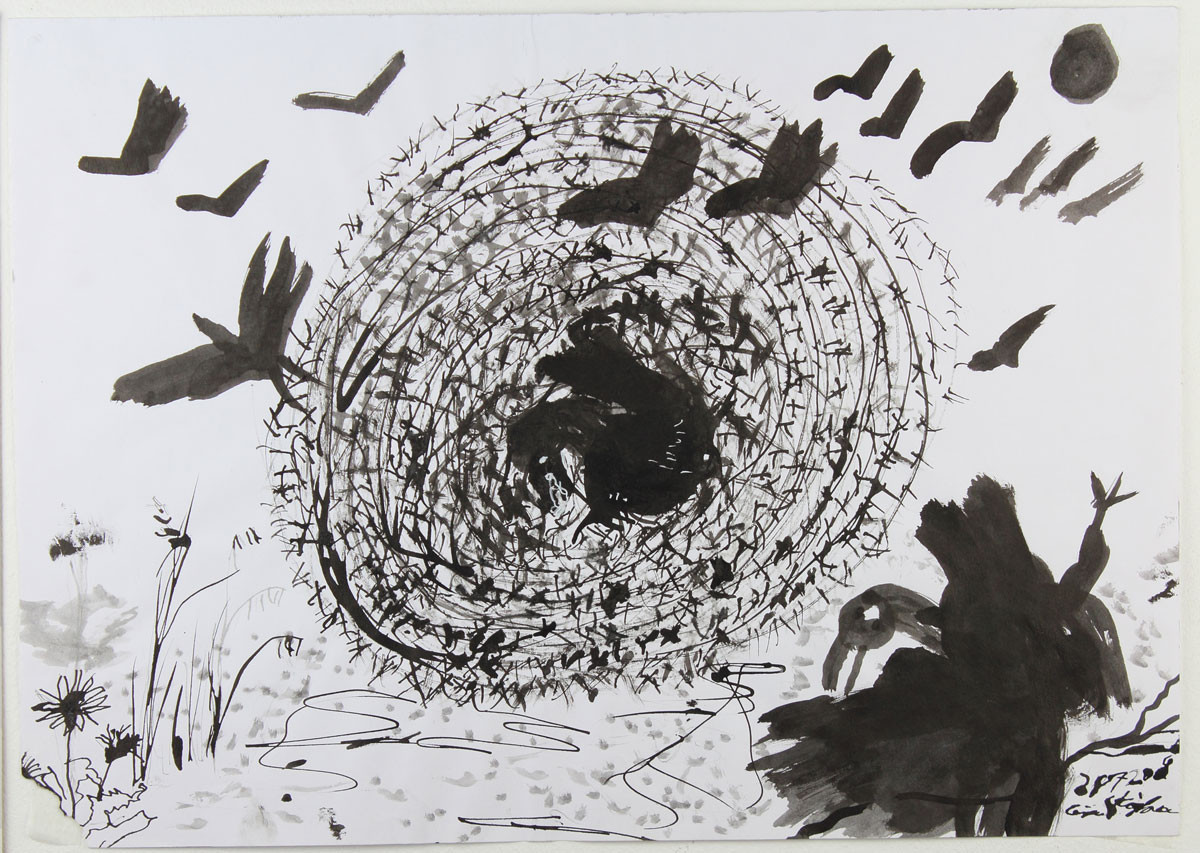Ceija Stojka
Mama, The Water Is Cold As Ice. Na dara muri [don’t be scared my… (?)]. Get Undressed, Come One, Come On! The Delousing Powder Was In Those Tin Boxes. 1943. Auschwitz. No 2, 2005; Untitled, 1995; 25 sur le banc de bois, 2011; Nach Auschwitz, 2003; Untitled, undated; Auschwitz 1994, Ohne Worte, 2006; Auschwitz. Wir schämen uns, 1944, 2008; Bergen Belsen. Mama., undated; Untitled, 2006; Wer Hat meinem Baum gefällt, 1996
📍 Venue → GHMP

Ceija Stojka was deported to Auschwitz with her family when she was ten years old. Stojka survived Auschwitz as well as the Ravensbrück and Bergen Belsen concentration camps. In Austria in the 1980s, together with her brother Karl, she was the first to break the silence surrounding the Romani Holocaust. She made work about her fate and the fate of her family and also spoke and wrote about it. At the end of the 1980s, when Stojka was in her fifties, she started to draw and paint as an autodidact. Her work is an impressive artistic narrative about the persecution and genocide of the Roma and Sinti under National Socialism. For the exhibition, we chose works that deal with the trauma of genocide in an oblique, indirect manner, posing the question of how to translate trauma into aesthetics. The images of disembodied eyes, animals, and idyllic landscapes strike one as if something has remained unrepresented and left unsaid. The exhibited paintings resonate with the notion of what is unspeakable: what it means to be exposed to the violence and cruelty of war and genocide.
Ceija Stojka (1933–2013) was an Austrian Romani writer, painter, activist, musician, and survivor of the Holocaust. The Stojkas were horse traders whose caravan spent winters in Vienna and summers traveling through the Austrian countryside, where the family could trace their heritage for over 200 years. Together with her mother and four of her five brothers, she survived the Holocaust and internment at Auschwitz, Ravensbruck, and Bergen-Belsen. Stojka, her mother, and sisters were freed by the British from Bergen-Belsen in 1945, after which they returned to Vienna. Stojka began school at the age of twelve in the second grade. She began painting at the age of 56 using unconventional painting implements like her fingers and toothpicks. She worked with casual everyday objects and materials, including cardboard, glass jars, postcards, and salt dough. Her work is rooted in German expressionism and folk art and depicts the death camps as well as “idyllic” pictures of family life in their painted wagon before the Holocaust. In 1992, she became the Austrian spokeswoman for the recognition of the Roma and Sinti genocide, along with being a voice in the struggle against the discrimination that the Roma continue to suffer throughout Europe.